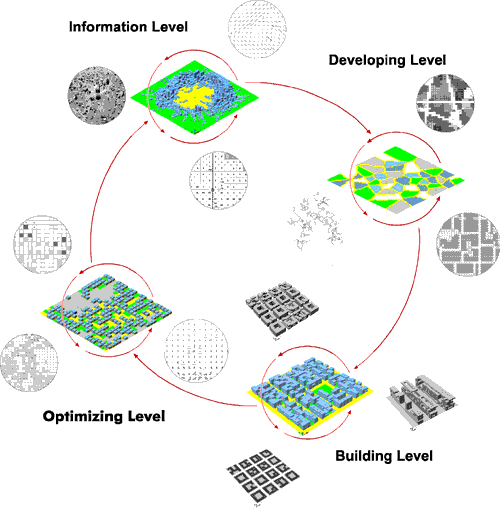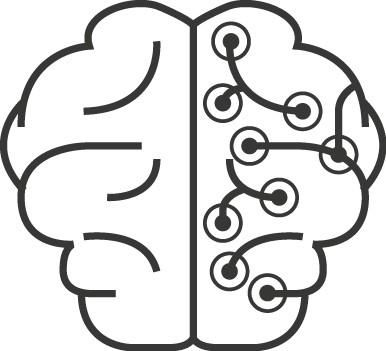Generating Urban Structures
This work is based on the concept that the structure of a city can be defined by six basic urban patterns. To enable more complex urban planning as a long-term objective I have developed a simulation method for generating these basic patterns and for combining them to form various structures. The generative process starts with the two-dimensional organization of streets followed by the parceling of the remaining areas. An agent-based diffusion-contact model is the basis of these first two steps. Then, with the help of cellular automata, the sites for building on are defined and a three-dimensional building structure is derived. I illustrate the proposed method by showing how it can be applied to generate possible structures for an urban area in the city of Munich.
A summary article about this work is published in Space&Form: pdf File
The below presented book “Computergenerierte Stadtstrukturen” is written in gernam:
Download complete 29 mb pdf Datei
Material aus dem Anhang:
VBA Quellcodes (01_Scripte) – 1 mb zip Datei
03_Exkurse – 6 mb zip Datei
04_Material – 6,6 mb zip Datei

References
Koenig, R. (2012). Generating urban structures: A method for urban planning supported by multi-agent systems and cellular automata. Space & Form, 16.
Koenig, R. (2011). Generating urban structures: A method for urban planning supported by multi-agent systems and cellular automata. (R Koenig & D. Donath, Eds.)Arbeitspapiere Informatik in der Architektur (Vol. 3). Weimar: Bauhaus-Universität Weimar.
Koenig, R., & Bauriedel, C. (2004). Computer-generated Urban Structures. In Generative Art Conference. Milan.
Koenig, R., & Bauriedel, C. (2004). Computergenerierte Stadtstrukturen. München: Eigenverlag. https://entwurfsforschung.de/urbandesign/urbanstructures/

